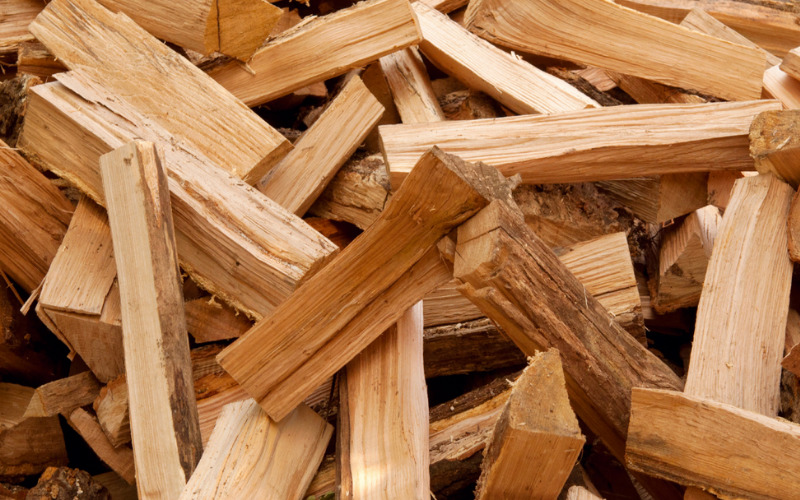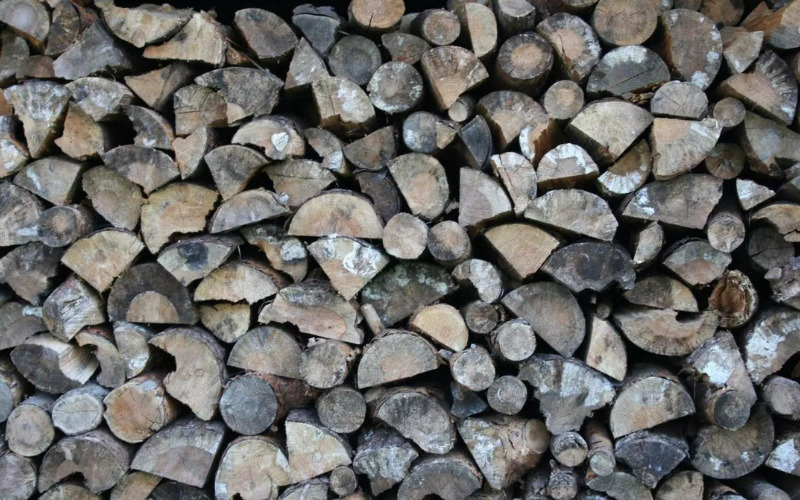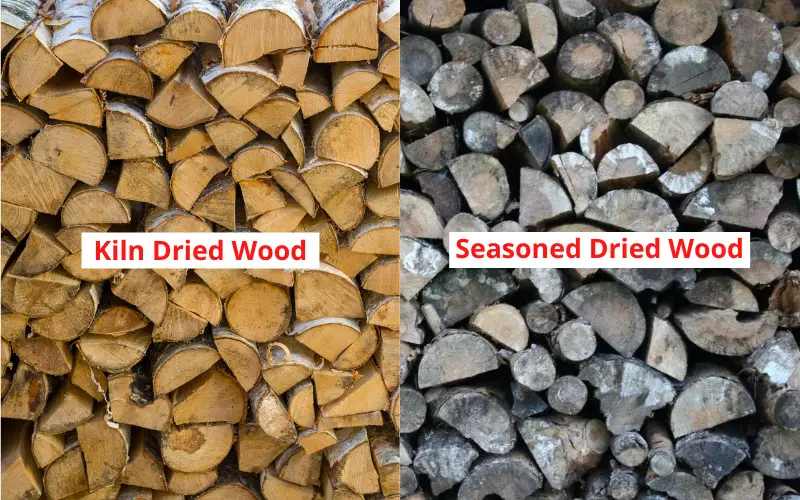It’s that time of the year when you need wood for your fireplace. But what happens when you don’t know what type of wood is best used for a fireplace? You become confused about what type of wood to purchase.
Fortunately, we will be diving into kiln wood and seasoned wood, and we will be answering your question, “is kiln dried wood better than seasoned wood?”
Kiln-dried wood is better than seasoned wood in many ways, but it also has downsides, and in this article, we will be talking about all of that.
What Is Kiln Dried Wood?

Before we go into kiln-dried wood, you have to understand the working mechanism of wood. Wood is hygroscopic, and they constantly absorb and lose water to maintain equilibrium, so kiln drying is necessary to get rid of excess moisture.
Kiln drying involves drying wood in a chamber where the temperature of about 250 and humidity is regulated to reduce the moisture content of the wood; the whole drying process works by vaporizing the moisture out of the wood.
Drying has some advantages: weight reduction, resistance to damages caused by insects and fungi, and increased durability.
Check Out: Mesquite vs Hickory Smoke – Which is Better for Your Food?
Is Kiln Dried Wood Worth It?
Kiln dried wood may seem a bit pricey, but purchasing a kiln dried wood is worth it. The result of a kiln dried wood has a huge benefit when compared to using regular wood.
Kiln dried wood is much easier to use because of its reduced moisture content. A kiln dried wood contains no insects and doesn’t pose the risk of having a disease.
This feature is best for users who prefer to store it; it also burns with very little or no smoke, which reduces the risk of inhaling carbon monoxide that can be a serious threat to your health.
Does Kiln Dried Wood Burn Faster?
Kiln dried wood burns faster. Because seasoned wood contains a lot of moisture, a lot of time is taken to burn off the moisture before burning the actual wood. However, since 20% moisture has been removed from a kiln dried wood, no time is wasted burning off moisture; instead, the wood starts burning immediately.
The fact that kiln-dried wood burns quickly can also be bad because you will need to replace it each time it burns out fast. Quick replacement means purchasing more kiln dried wood, and kiln dried wood is a bit expensive.
What Is Seasoned Dried Wood?

Seasoned wood, just like kiln dried wood, has been dried to remove some of its moisture content. One of the differences between kiln dried wood and seasoned Is that seasoned wood takes a lot of time to get dried.
Seasoned wood is dried naturally without it going through a chamber process. The natural process involves allowing your wood to dry outside to eliminate some of the other useful moisture content; seasoning can take up to six months.
It takes softwood like cedar, fir, and spice a minimum of 6 months to get dried, while hardwood like oak, ash and cherry may take 1 to 2 years to be seasoned.
To season your wood, you will need to select a spot suitable to house your wood. This area should be protected from rain but should have air circulation; cut your wood into smaller fractions as chopped wood set faster.
Is Seasoned Wood The Same As Dried Wood?
While seasoned wood and dried wood have been relieved of some of their moisture content, there are still major differences between these two wood.
Seasoned wood is naturally dried; in other words, seasoned wood is exposed to sunlight and air to help it dry.
Kiln dried wood, on the other hand, are dried artificially in a specialized drying chamber.
Of course, kiln drying wood is much faster than natural seasoning and using a kiln chamber is an intensive process that involves a lot of heat.
Natural seasoning is a cheaper drying process than using a kiln, making this factor the greatest advantage of seasoned wood over kiln dried wood.
Related Article: Can You Use Wood Pellets Instead of Wood Chips
What Does It Mean When A Wood Is Seasoned
Seasoned wood is wood that has been dried naturally for a long time. Seasoning of wood is completed within a minimum of 6 months and a maximum period of 2 years; it all depends on the type of wood being seasoned.
To properly season your wood, you need to select the best location for seasoning. Your ideal location for seasoning is in a place where it can be protected from the rain and has sufficient air circulation.
You should also cut your logs to ensure that they are faster; after cutting them, stack them neatly against the wall in your selected location to prevent them from falling.
Stacked wood will dry faster than wood in piles, so you can stack your wood if you have enough strength and energy.
You should also note that different types of wood like hardwood and softwood take a different amount of time to get dry. Hardwood may take longer to dry (about 1 to 2 years) because of its thickness, while softwood may take a shorter time to dry. For extra protection, you can use a plastic tarp to cover your stacked logs.
How Can You Tell If A Wood Is Seasoned?
It can be difficult for some people to distinguish between Greenwood(fresh wood) and seasoned wood. The easiest way to identify seasoned or fresh wood is by using a moisture meter; a moisture meter tells you the amount of moisture in the wood.
A high moisture content means that your wood is not seasoned, while a low moisture content signifies that your wood is seasoned.
Suppose you are not able to get your hand n a moisture meter. In that case, there is always an alternative, and this alternative involves studying the physical features of seasoned wood and trying to identify your wood similarly.
Seasoned or well-dried wood doesn’t look green like fresh wood and has a pale color, and unlike green wood with sap oozing out of it, seasoned wood is sap free.
Since some of its moisture has dried off, seasoned wood is lighter than green wood that still contains its normal amount of moisture; some greenwood is smooth in texture while seasoned or properly dried wood has visible cracks.
You can also tell if the wood is seasoned by hitting two pieces of logs together. If you hear a hollow sound, it means that your wood is dry, and if a hollow sound is not present, it means that your wood is not fully dried.
Seasoned Vs Kiln Dried Wood – Which Is Better?
We have discussed the differences between naturally seasoned wood and kiln-dried wood, but they have some similarities in burning that make it difficult to choose which one is better.
Both naturally seasoned and kiln dried wood burns to produce a small amount of smoke, making your house or area free of pollution that may be harmful to your health.
They both burn and don’t deposit creosote inside your chimney, which could lead to a fire in your chimney; they are also free of insects, making it okay to store them inside.
Because the fast process of kiln dried wood is expensive while naturally seasoned wood is relatively cheaper. But kiln does wood burns hotter than a naturally seasoned wood because of lesser moisture making it better than traditionally seasoned wood. Kiln dried wood is not only good for fireplaces but for also pizza oceans.
Is Kiln Dried Firewood Better?
Kiln-dried woods are readily available to be used anytime, unlike seasoned wood, which may be short in supply because of its long drying period.
The moisture content in seasoned wood is reduced by only 25%, making it tough to achieve an ideal. Whereas in kiln dried wood, more moisture is removed; this is why kiln dried wood burns hotter than seasoned wood.
The only downside to using Kiln dried wood is that it is more expensive than seasoned wood. But overall, kiln dried wood is the best option when it comes to your fireplace and your pizza oven.
Conclusion: Seasoned vs Kiln Dried Wood
Seasoned wood and kiln dried wood can be similar in many ways but still have a few differences. Their differences are what tells you which is more suitable to be used.
Kiln dried wood can be purchased online, showing how readily available it is; however, it comes with a huge price. Seasoned wood, on the other hand, is cheaper but limited in supply. With the high price being a kiln wood’s only drawback, it makes purchasing kiln dried wood worth it.
You May Also Like:
- Wood Pellets vs. Wood Chips – Which is Better
- Fire Pit Ring Insert Buyers Guide and Cost
- Why is it Called a Rick of Wood?
- Can You Use Wood Pellets Instead of Wood Chips
- What is a Low Pressure Propane Burner?
- How to Start a Fire in A Fire Pit? (With Explainer Video)
- Rick of Wood Dimensions – WHAT IS A RICK OF WOOD?
We trust this article helped you learn more about Seasoned vs Kiln Dried Wood. You may also want to check out this article: Is Kiln Dried Wood Safe to Burn? (What You Must Know).
Thanks for taking the time to read our article, and we hope you find it helpful. Would you mind leaving a comment below if you have any suggestions?
Kindly reach out to people by sharing this post on social media.
If you liked this article, then please follow us on Facebook, Instagram, and Pinterest.

